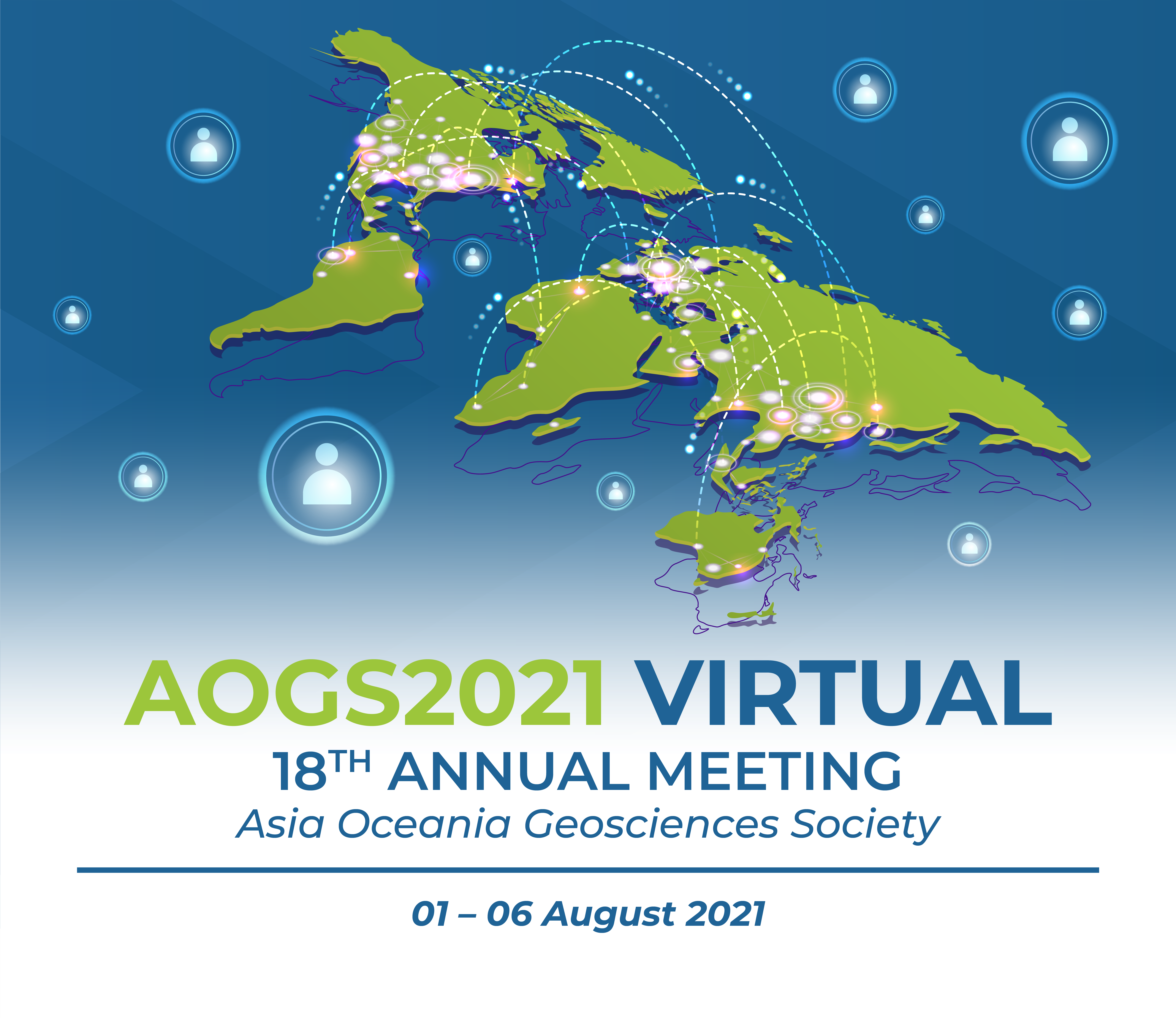

*Attend these AOGS2021 Webinars Free! – Registered Attendees Only
All AOGS e-news subscribers are eligible to attend. Please help us forward this information to your friends and
professional contacts. If not yet a subscriber, they need sign up for an account on MARS to receive
the complimentary invite. Not yet a subscriber?
Sign up Here to Receive Your Complimentary Invitation
Axford Lectures | Medal Lectures | Section Distinguished Lectures
All times shown are Singapore Standard Time (GMT+8)
| ST Section Lectures & Meeting | Room: WB2 |
| Transition | 15:30 – 16:00 |
| ST Kamide Lecture | 16:00 – 16:45 |
| ST Distinguished Lecture | 16:45 – 17:30 |
| ST Section Meeting | 17:30 – 18:30 |

Tue-03 Aug, 15:30 – 18:30, Room: WB2
Distinguished Lecture - ST (Save a seat)
“Imaging the Earth’s magnetosphere with Solar wind Magnetosphere Ionosphere Link Explorer (SMILE)”
Chi WANG
State Key Laboratory of Space Weather, Chinese Academy of Sciences
The interaction between the solar wind and the Earth's magnetosphere, and the geospace dynamics that result, is one of the key question in plasma physics. In situ instruments on a fleet of solar wind and magnetospheric constellation missions now provide the most detailed observations of Sun-Earth connection. However, we are still unable to quantify the global effects of those drivers, including the conditions that prevail throughout geospace. This information is the key missing link for developing a complete understanding of how the Sun gives rise to and controls Earth's plasma environment and space weather.
Solar wind Magnetosphere Ionosphere Link Explorer (SMILE) is a novel self-standing mission dedicated to observing the solar wind-magnetosphere coupling via simultaneous in situ solar wind/magnetosheath plasma and magnetic field measurements, soft X-Ray images of the magnetosheath and polar cusps, and UV images of global auroral distributions. Remote sensing of the magnetosheath and cusps with X-ray imaging is now possible thanks to the relatively discovery of solar wind charge exchange (SWCX) X-ray emission, first observed at comets, and subsequently found to occur in the vicinity of the Earth's magnetosphere. SMILE is a collaborative mission between ESA and the Chinese Academy of Sciences (CAS) that was selected in November 2015 and is due for launch at the end of 2023.
While analyzing the observed images after the launch of SMILE, it will be a challenging task to reconstruct the 3-dimensional surface of the magnetopause from 2-dimensional image(s). Therefore, one of the most important key issue about SMILE is the reconstruction of magnetopause from X-ray image(s). Four main approaches have been developed by far: the boundary fitting approach (BFA), the tangent fitting approach (TFA), the tangential direction approach (TDA), and the computed tomography approach (CTA). This talk will present SMILE science and give a brief review about SXI onboard SMILE, and summarize the arsenal of magnetopause reconstruction approaches that have developed currently.
Biography
Prof. Chi Wang, Director General of the National Space Science Center, Chinese Academy of Sciences. He graduated from the University of Science and Technology of China, and got his Ph.D. degree from the Massachusetts Institute of Technology, USA in 1998. He worked on the plasma experiments on Voyager 2 and studied the interaction of the solar wind with the local interstellar medium. Starting from 2001, he led the effort to establish the first state key laboratory of space weather in China. He has jointly developed a 3D global MHD magnetospheric model (namely PPMLR-MHD) and investigated the interaction of the solar wind with the magnetosphere. He has published more than 200 peer-reviewed papers including Nature, JGR etc. He is currently the mission Co-PI of the solar wind – magnetosphere – ionosphere link explorer (SMILE),an new ESA-China joint space science mission to image the magnetosphere. He is also the PI of the Meridian Project, the ground-based space environment monitoring network in China. He is also overseeing the scientific payload for Chinese Lunar and Deep Space Exploration Program including CE-4, CE-5 and the first Chinese Mars Mission, and was the deputy chief designer of the Chinese Lunar Exploration CE-4 mission.